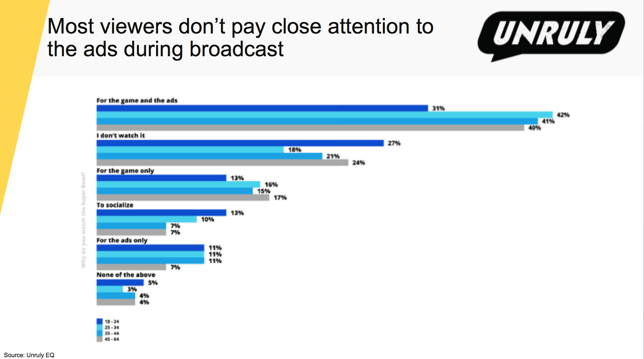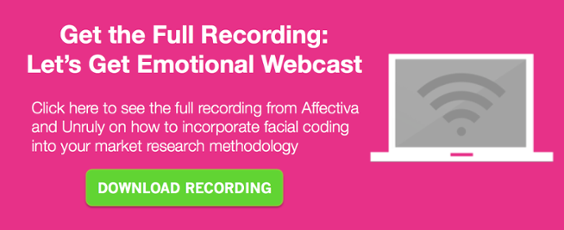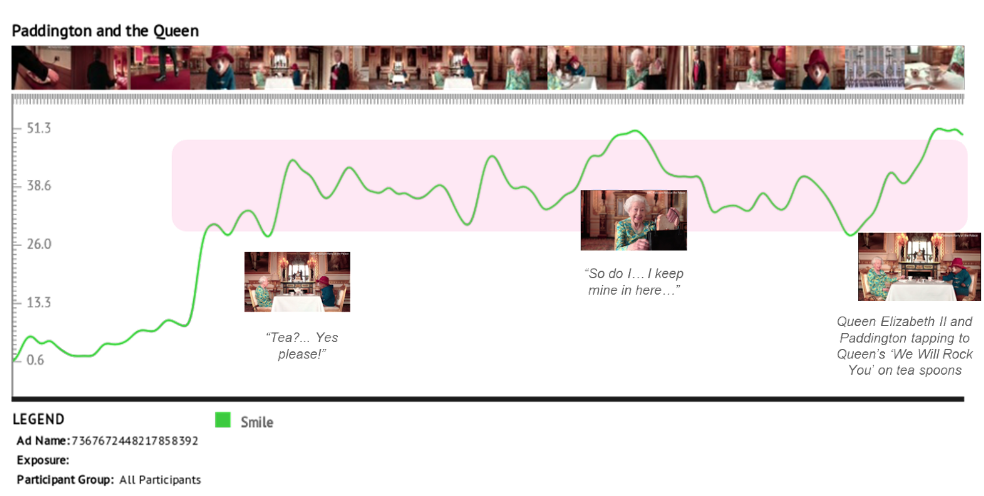Surveys aren't the industry-standard anymore: in fact, relying on this data alone doesn't stand up to what's coming next. Imagine the future of market research where respondents no longer have to manually input their thoughts and reactions to content, but you will be able to tell right from the expressions on their faces.
Affectiva and Unruly recently gave a webcast where they shared their methodology on how they gather data from psychological responses to yield more accurate results and correlations - with specific examples extracted from a recent Unruly study on Super Bowl 2017 ads. Here’s a recap on what both companies discussed.

How does Affectiva’s facial expression analysis work?
Affectiva measures facial expressions of emotion and provides analytics to help market researchers understand how the emotional content impacts sales lift. Our computer vision algorithms identify key landmarks on the face. Then, machine learning algorithms analyze pixels in those regions to classify facial expressions. Combinations of facial expressions are mapped to emotions such as joy, sadness, and so on. This is all powered by the world’s largest emotion repository including 75 countries, 5.3 million analyzed faces, and 2 billion facial frames.
How is Affectiva’s Emotion AI used?
⅓ of Fortune Global 100 and leading market research firms use Affectiva for insights and analytics. Major brands use Affectiva to quantify consumer emotional engagement with their content and brands. Affdex for Market Research displays moment-by-moment emotion trace in synch with your content. It’s used to see which moments were the most engaging and to see how your content is progressing over time. Market Researchers can also take advantage of our Affdex scores, which offer insights towards sales lift, purchase intent, and virality.
- Sales Lift - Ads with strong positive emotion dynamics and lack of negative dynamics are four times more likely to lead to an increase in sales.
- Purchase Intent - Affectiva’s emotion data predicted changes in purchase behavior with 76% accuracy.
- Virality - Ads with higher emotion engagement are two times as likely to garner over 20 million video views.
Using Affectiva’s emotion recognition technology, Unruly combines facial coding and a survey-based technique to understand emotional response to content. They aggregate their data into “Unruly Pulse,” which shows which emotions are tending to be evoked by territory or by time of year and can offer many insights. When Unruly analyzed the advertising during the Super Bowl, they found some surprising results: not everyone who’s watching the game is actually paying attention to the ads. This is a problem because 500 million dollars were spent on Super Bowl ads and there were over 111 million TV viewers.

To help brands with their Super Bowl campaigns, Unruly derived their “Super Bowl Playbook.”
The Playbook:
1) Hit ‘em hard with emotions
Both Affectiva and Unruly have conducted research that links intense emotional response with brand metrics, recall, and purchase. This strong correlation is why Unruly emphasizes the importance of evoking a strong emotional response. Specifically to the Super Bowl, Unruly found that the kind of emotions most commonly evoked were inspiration, pride, warmth, and happiness. This finding has been consistent across eight years of analyzing the super bowl ads. So, given this information, you need to think about the emotional profile of your brand: what emotions can you evoke that will best tell the story of your brand? Once you decide that, then you really need to hit that emotion. Unruly found that ads who evoked a wide variety of different emotions were particularly successful. Additionally, ads that evoked lesser common emotions found in super bowl ads (such as sadness) were actually some of the best ads. They broke away from the emotional pack and gained cut through by evoking a different emotion than the rest of the super bowl ads.
2) Create ads that make an impact
Ads that have a strong social message tend to be more successful.
3) Identify, profile and target your most important audiences
There are three main audiences that you’ll want to target:
- “Emotional Audience” - this is the group of people who have a strong emotional response. Emotions drive actions, so strong emotional responses lead to huge uplifts in key metrics including completion rate, brand favorability, brand recall, and purchase intent.
- “Light Buyer Audience” - to identify this audience, look at a given viewer’s consumption frequency. You can grow your market shares by targeting light buyers who have the capacity to buy more. You could also target your competitors’ light buyers.
- “Bespoke Audience” - this is a customized audience you care about based on a survey question (i.e. “are you a pet lover?”).
3) Promote your brand
Unruly underscored how promoting your brand leads to strong brand recall. If it’s not clear what your brand has to do with the storyline, the brand recall will be low. Make sure your brand is integral to the storyline of the video. You want the storyline of your ad to no longer work if you remove the brand.
4) Advertise on viewers’ terms
Give your viewers control! They don’t want ads forced down their throats. Unruly conducted a study and found that 62% of viewers wanted to be in control of video ads. Additionally, 81% sometimes, often, or always mute video ads. Lastly, 63% of consumers are so annoyed by forced pre-roll ads that it puts them off the brand.






